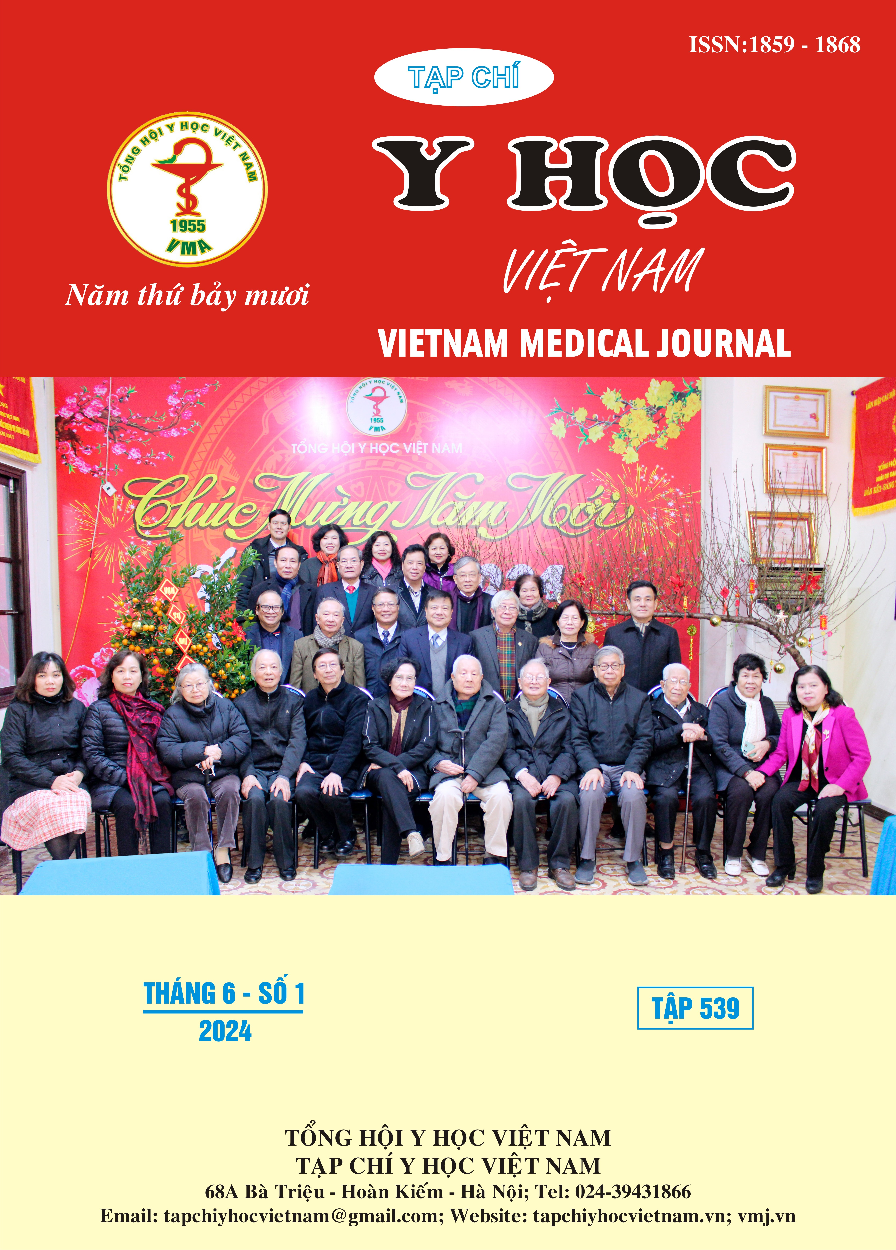RESULTS OF OPERATIVE MINIMALLY INVASIVE PLATE OSTEOSYNTHESIS IN TREATMENT OF DISTAL FEMORAL FRACTURE AT VIET DUC UNIVERSITY HOSPITAL
Main Article Content
Abstract
Introduction: Fracture of the femoral head was a large, complex fracture that often affected movement of the knee joint. Minimally invasive plate osteosynthesis (MIPO) for distal femoral head fractures contributed to achieving firm fracture fixation, patients could exercise shortly after surgery. Method: Retrospective and prospective cross-sectional descriptive study. From Janury 2022 to Janury 2023, 45 patients diagnosed with closed distal femoral head fracture underwent minimally invasive plate osteosynthesis. Patients had minimum 6 months follow-up. Result: In 45 patients studied, there were 25 (55.6%) male patients and 20 (44.4%) female patients. The average length of hospital stay was 4.27 days. There were 2 cases of superficial infection (4.4%) and 1 case of deep infection requiring reoperation (2.2%). Results showed 100% of patients had healed bones. Results of correction of fractures on X-ray according to Larson - Bostman: Good and very good accounted for 88.9%, average accounted for 11.1%. Rehabilitation results according to Schatzker and Lambert: very good 73.3%, good: 22.2%, average 4.4% and poor 0%. Conclusion: Minimally invasive plate osteosynthesis in the treatment of distal femoral fracture with a locking plate brought positive results with many advantages, was a good choice in the treatment of distal femoral head fracture.
Article Details
References
2. Plumarom Y, Wilkinson BG, Willey MC, An Q, Marsh L, Karam MD. Sensitivity and specificity of modified RUST score using clinical and radiographic findings as a gold standard. Bone Jt Open. 2021;2(10):796-805. doi:10.1302/2633-1462.210.BJO-2021-0071.R1
3. Kregor PJ, Stannard JA, Zlowodzki M, Cole PA. Treatment of distal femur fractures using the less invasive stabilization system: surgical experience and early clinical results in 103 fractures. J Orthop Trauma. 2004;18(8):509-520. doi:10.1097/00005131-200409000-00006
4. Brodke D, O’Hara N, Devana S, et al. Predictors of Deep Infection After Distal Femur Fracture: A Multicenter Study. J Orthop Trauma. 2023;3 7(4): 161-167. doi: 10.1097/BOT. 0000000000002514
5. Ebraheim NA, Martin A, Sochacki KR, Liu J. Nonunion of Distal Femoral Fractures: a Systematic Review. Orthop Surg. 2013;5(1):46-50. doi:10.1111/os.12017
6. Henderson CE, Kuhl LL, Fitzpatrick DC, Marsh JL. Locking plates for distal femur fractures: is there a problem with fracture healing? J Orthop Trauma. 2011;25 Suppl 1:S8-14. doi:10.1097/BOT.0b013e3182070127
7. Kim JW, Oh CW, Oh JK, et al. Malalignment after minimally invasive plate osteosynthesis in distal femoral fractures. Injury. 2017;48(3):751-757. doi:10.1016/j.injury.2017.01.019
8. Lill M, Attal R, Rudisch A, Wick MC, Blauth M, Lutz M. Does MIPO of fractures of the distal femur result in more rotational malalignment than ORIF? A retrospective study. Eur J Trauma Emerg Surg Off Publ Eur Trauma Soc. 2016;42(6):733-740. doi:10.1007/s00068-015-0595-8


